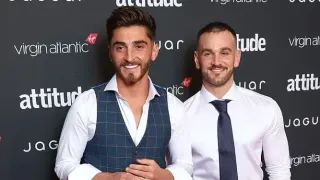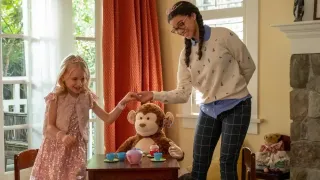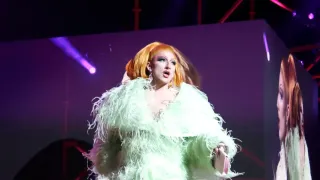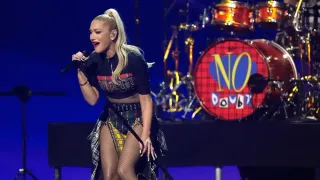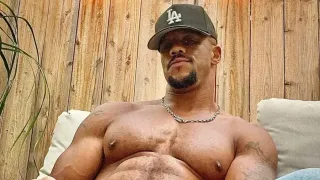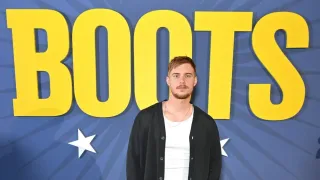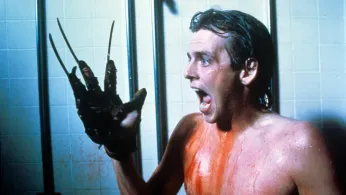
4 hours ago
Robert Englund Affirms He "Knew What Was Going On" With Gay Subtext in "Nightmare on Elm Street 2"
READ TIME: 6 MIN.
Robert Englund, the actor who brought Freddy Krueger to life across multiple films in the "Nightmare on Elm Street" franchise, has confirmed what many fans have long suspected: the gay subtext in "A Nightmare on Elm Street 2: Freddy's Revenge" was no accident, and he knew exactly what was happening during production .
The horror icon's recent comments add significant weight to decades of discussion about the 1985 sequel's queer themes, which have made it both controversial and beloved within LGBTQ+ communities. Englund's acknowledgment that he "knew what was going on" with the film's homoeroticism provides rare insight from someone at the center of one of horror cinema's most debated productions .
Released in November 1985, "A Nightmare on Elm Street 2: Freddy's Revenge" has long been recognized as one of the most overtly queer horror films ever produced by a major studio. The film follows Jesse Walsh, played by Mark Patton, as he battles Freddy Krueger's attempts to possess his body and use him to kill. Unlike the "final girl" trope that dominated horror films of the era, Jesse became horror's first "final boy," a gender-reversed take on the traditional slasher victim .
The movie features numerous scenes that audiences have cited as evidence of its queer subtext. These include a scene where Jesse encounters his gym coach at a gay leather bar, a sequence where the coach is killed by Freddy while naked in the showers as towels whip him, and a pivotal moment where Jesse flees from his girlfriend's romantic advances at a party and runs to his male best friend Grady's house, begging to sleep in his bed .
At the time of its release, one publication referred to Freddy's Revenge as "the gayest horror film ever" . In the decades since, it has become a cult film for gay audiences, with the website Cracked.com later listing it as number one on "The 5 Most Unintentionally Gay Horror Movies" .
Englund has been consistent in acknowledging the film's queer themes over the years, contrasting sharply with other members of the production who claimed ignorance. In a 2010 interview with Attitude magazine, Englund stated that "the second "Nightmare on Elm Street" is obviously intended as a bisexual themed film. It was early '80s, pre-AIDS paranoia. Jesse's wrestling with whether to come out or not and his own sexual desires was manifested by Freddy. His friend is the object of his affection. That's all there in that film" .
The actor also noted that the casting of Mark Patton was intentional, explaining that "Mark was out and had done "Come Back to the Five & Dime, Jimmy Dean, Jimmy Dean" . This deliberate choice in casting an openly gay actor to play Jesse added another layer to the film's queer coding.
Englund's recent comments to Out magazine continue this pattern of acknowledgment, with the actor discussing Freddy Krueger's sexual fluidity and recalling on-set conversations about turning up the film's homoeroticism .
In one particularly telling anecdote, Englund revealed that he actually wanted to play with the subtext even more explicitly. During a pivotal scene, he prepared to insert one of his character's knife blades into Jesse's mouth instead of merely caressing his lips as shown in the finished film. However, Patton did not feel comfortable with the more overtly sexual imagery. The film's makeup artist, Danny Marc, specifically advised Patton not to do the scene that way to protect his image .
While Englund was aware of the subtext, screenwriter David Chaskin initially denied any intentional gay themes before finally admitting the truth in 2010. Chaskin explained his motivation: "Homophobia was skyrocketing and I began to think about our core audience—adolescent boys—and how all of this stuff might be trickling down into their psyches. My thought was that tapping into that angst would give an extra edge to the horror" .
This admission was particularly significant because Chaskin had previously suggested that any gay subtext was the result of Patton's performance choices rather than the script itself. In the documentary "Never Sleep Again: The Elm Street Legacy," Chaskin stated that "There is nothing logical that can explain the level of homoeroticism in this movie" .
The awareness of the film's gay subtext varied significantly among the cast and crew. Director Jack Sholder claimed to have "simply did not have the self-awareness to realize that any of this might be interpreted as gay" and stated he "also had not the slightest idea that one of my lead actors was gay" . Sholder reportedly laughed when The Village Voice ran a review declaring it a "great, gay movie" .
Producer Robert Shaye, who made a cameo as a bartender at the leather bar, also claimed to have been oblivious to the subtext, as did producer Sarah Risher and actors Kim Myers and Marshall Bell .
However, some cast members were more perceptive. Robert Rusler, who played Jesse's friend Ron Grady, acknowledged that "I knew there were homosexual undertones in the script when I read it. I knew at the audition" .
Englund himself has noted that "people have a bit of a selective memory around this… I knew we were treading in there" .
Even members of the art department appeared to be in on the subtext, placing a game called Probe in Mark's closet and putting a sign reading "No Out of Town Chicks" on the door .
The film's gay subtext had devastating consequences for lead actor Mark Patton, who was an openly gay man working in Hollywood during the height of the AIDS crisis. The association with the film's homoeroticism effectively ended his career in mainstream Hollywood, and he eventually left the industry entirely.
Patton's experience with the film and its aftermath became the subject of the 2019 documentary "Scream, Queen! My Nightmare on Elm Street," which explored how the movie's queer themes affected his life and career. The film also documented the complicated relationship between Patton and screenwriter Chaskin, who had initially denied the intentional subtext before later admitting it .
According to the book "Welcome to Our Nightmares: Behind the Scene with Today's Horror Actors," the film's homoerotic elements were extensive, noting that "The film suggested an undertone of homosexuality, starting with the protagonist's gender-neutral name. Jesse's rarely fully clothed. He and a tormentor have a sweaty wrestling match. His coach, clad in leather, basically hits on him in a gay bar, then gets killed by Freddy, including a bare-ass spanking" .
Despite—or perhaps because of—its controversial queer themes, "A Nightmare on Elm Street 2: Freddy's Revenge" has achieved cult status within LGBTQ+ communities. The film is now celebrated as an early example of queer horror cinema, even if that queerness was used to evoke fear and anxiety in its original 1985 context.
The movie's exploration of Jesse's internal struggle can be read as an allegory for coming out and accepting one's sexuality. Freddy's possession of Jesse represents the fear of one's true self emerging against one's will, a theme that resonates deeply with experiences of closeted LGBTQ+ individuals. The film's climactic scenes, where Jesse literally has Freddy bursting out of him, mirror the forced visibility that many queer people feared during the conservative Reagan era .
Englund's recent comments acknowledging and embracing the film's queer themes represent a significant moment of validation for fans who have long celebrated the movie's subversive subtext. His willingness to discuss Freddy Krueger's sexual fluidity and the intentional nature of the film's homoeroticism helps legitimize interpretations that were once dismissed or ignored .
"A Nightmare on Elm Street 2: Freddy's Revenge" occupies a unique place in horror history as one of the most explicitly queer mainstream horror films of the 1980s. While queer subtext has always existed in horror cinema—from the coded relationships in vampire films to the gender-bending of various monsters—few films before or since have been quite as overt in their homoeroticism while still being marketed to mainstream audiences.
The film arrived at a particularly fraught moment in LGBTQ+ history, released in 1985 when the AIDS crisis was devastating gay communities and societal homophobia was reaching new heights. Screenwriter Chaskin's admission that he deliberately tapped into adolescent boys' anxieties about homosexuality reveals how the film weaponized queer imagery to create horror, using the specter of gayness as something frightening and monstrous .
Yet the film's very existence and its subsequent embrace by LGBTQ+ audiences demonstrates the community's ability to reclaim and reinterpret media that was originally intended to marginalize them. What was meant as horror has been transformed into celebration, and a film designed to exploit homophobia has become a touchstone of queer cinema.
Englund's ongoing acknowledgment of the film's queer themes, culminating in his recent interviews, represents an important form of recognition from someone who was central to the film's creation. His comments validate decades of queer readings of the film and acknowledge that those interpretations were not projections but rather responses to intentional creative choices .
As horror cinema continues to evolve and diversify, with more openly queer filmmakers creating explicitly LGBTQ+ horror content, "A Nightmare on Elm Street 2: Freddy's Revenge" remains an important historical marker—a reminder of both how far queer representation has come and the complicated legacy of coded queer content in mainstream media.
